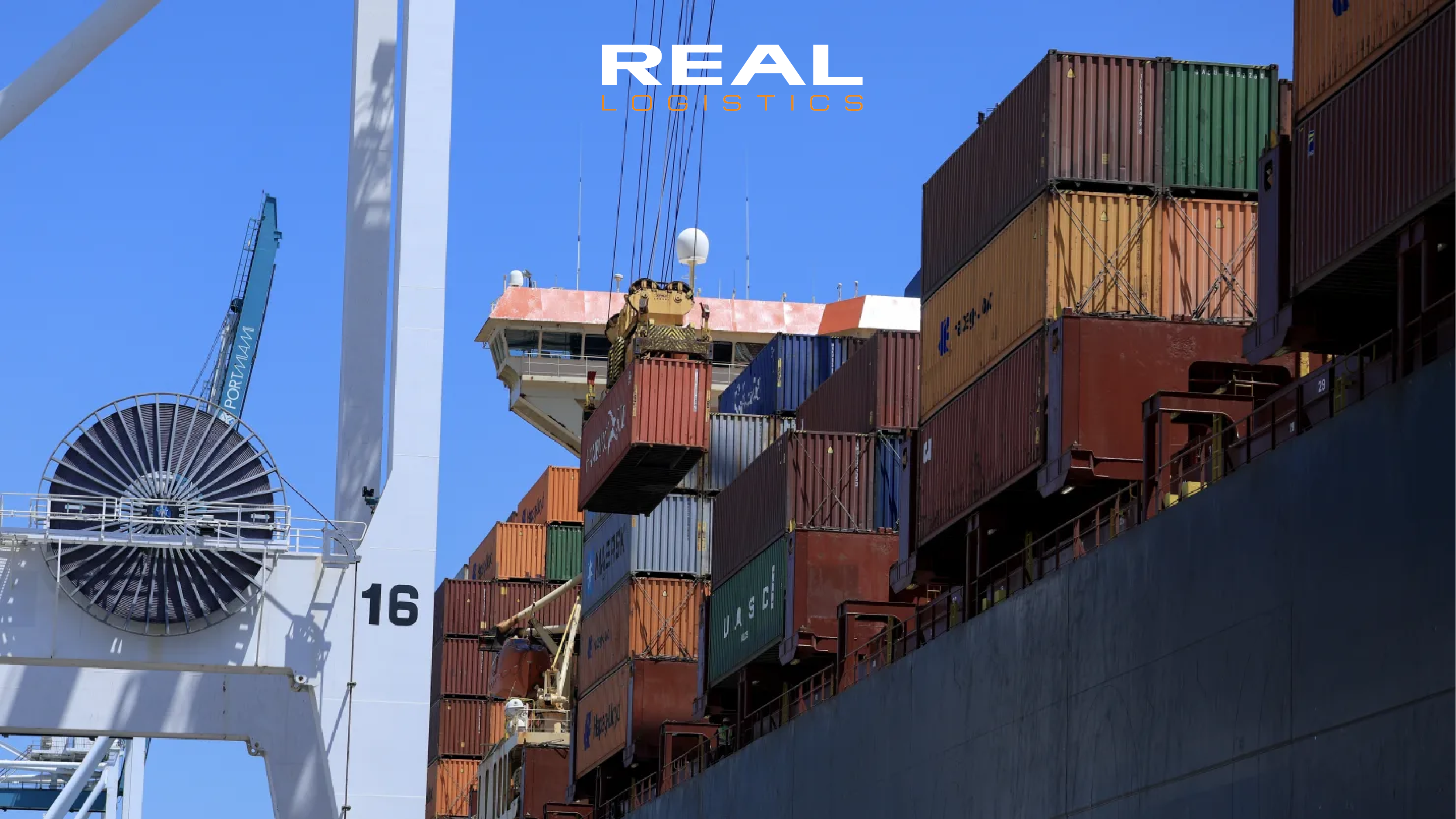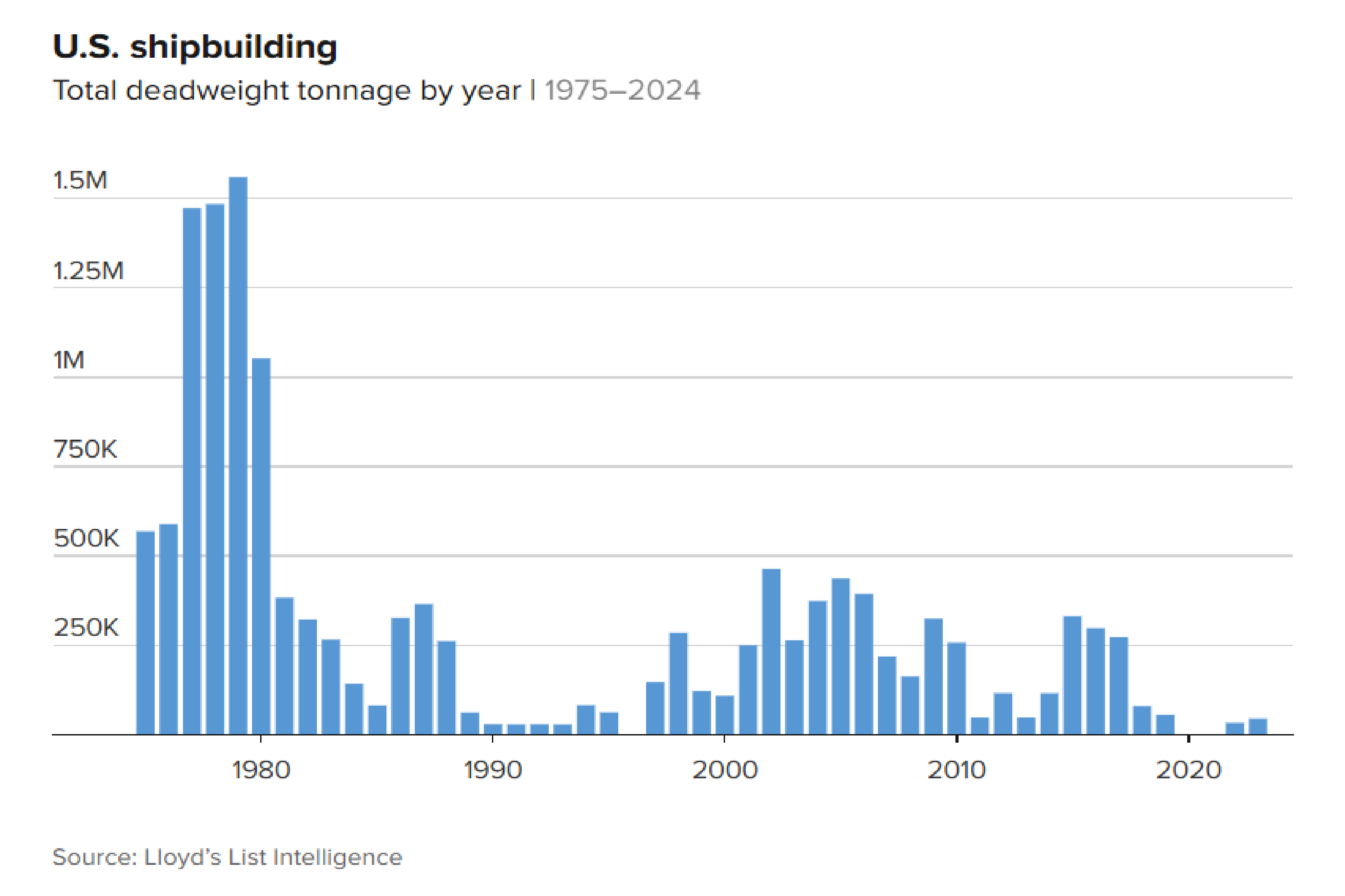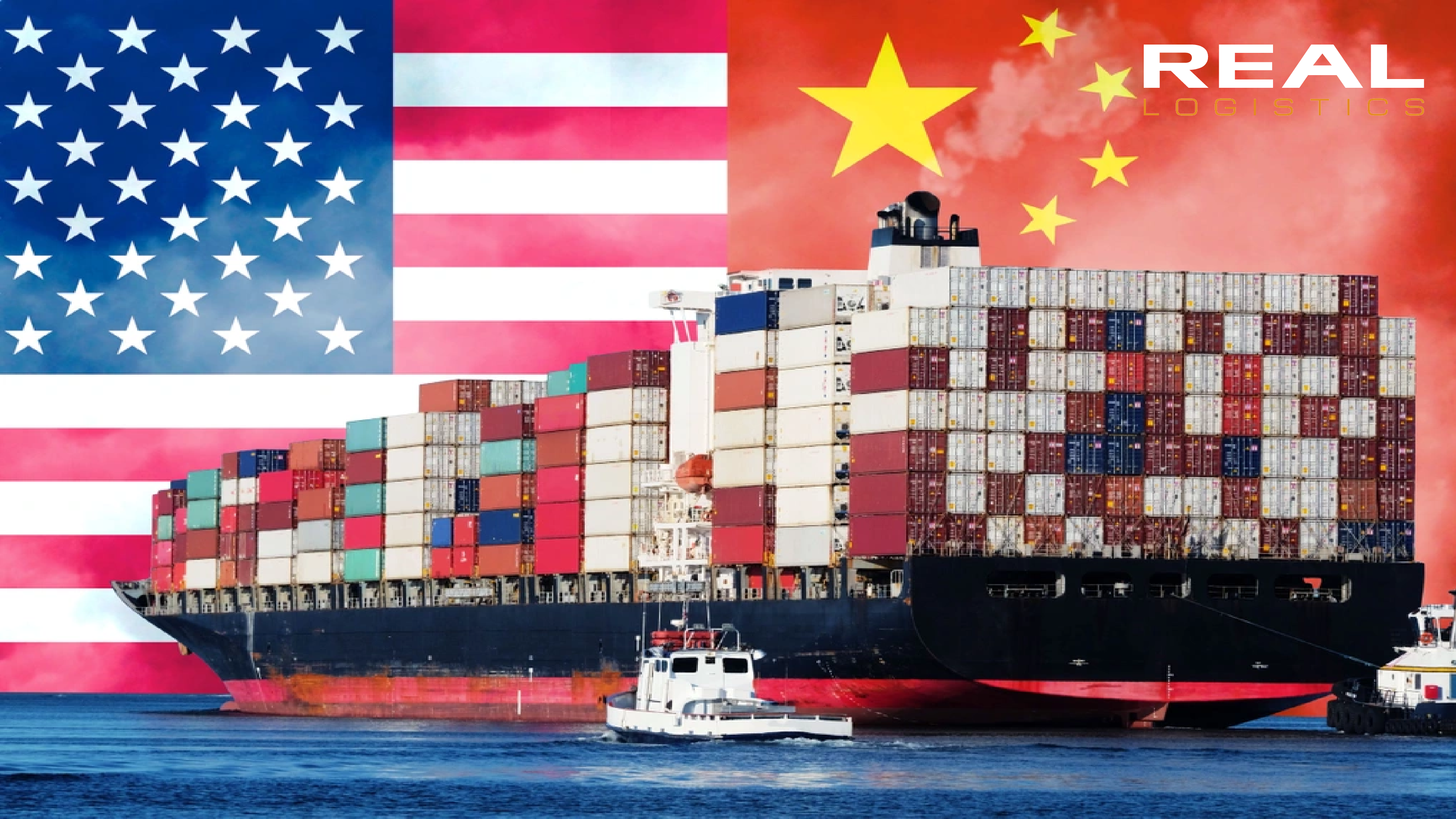U.S. Imposes Port Fees on Chinese-Built Ships to Counteract China's Maritime Dominance

On Thursday, April 17, 2025 (US time), in a significant policy shift, the Trump administration introduced new port fees targeting Chinese-built vessels docking at U.S. ports. This move follows a comprehensive investigation by the United States Trade Representative (USTR), initiated during the Biden administration, which concluded that China's maritime practices are unreasonable and detrimental to U.S. commerce.
1. Background and Rationale
The USTR's investigation highlighted China's aggressive strategies in the shipbuilding sector, which have severely disadvantaged U.S. companies and workers. China's dominance in global shipbuilding is attributed to substantial state subsidies and preferential treatment for state-owned enterprises, enabling it to capture over 50% of the global shipbuilding market. In contrast, U.S. shipyards, which built 70 ships annually in 1975, now produce only about five per year.
U.S. Trade Representative Jamieson Greer emphasized the importance of this policy, stating, "Ships and shipping are vital to American economic security and the free flow of commerce." The administration aims to reverse Chinese dominance, address threats to the U.S. supply chain, and stimulate demand for U.S.-built ships.
Many argue that the United States is not in a position to win an economic war that puts shipping lines using Chinese-made vessels in the middle. Soon, Chinese-made vessels will account for 98 percent of the commercial vessels on the world’s oceans.

2. Fee Structure and Implementation
The newly announced fees will be charged per voyage, not per port, and are scheduled to take effect on October 14, 2025. The fee structure is as follows:
Chinese Vessel Operators and Owners:
- Effective April 17, 2025: $0 per net ton
- Effective October 14, 2025: $50 per net ton
- Effective April 17, 2026: $80 per net ton
- Effective April 17, 2027: $110 per net ton
- Effective April 17, 2028: $140 per net ton
Operators of Chinese-Built Vessels:
- Effective April 17, 2025: $0 for each container discharged
- Effective October 14, 2025: $18 per net ton (approx. $120 per container)
- Effective April 17, 2026: $23 per net ton (approx. $153 per container)
- Effective April 17, 2027: $28 per net ton (approx. $195 per container)
- Effective April 17, 2028: $33 per net ton (approx. $250 per container)
These fees will be charged up to five times per year, per vessel. Additionally, fees on foreign-built car carrier vessels will be based on their capacity, starting at $150 per Car Equivalent Unit (CEU) in 180 days.
3. Remission and Exemptions
Vessel owners may be eligible for a remission of the fees if they can provide proof of a U.S. shipbuilding order. The remission would be based on a net tonnage capacity equal to or less than the U.S.-built vessel ordered. If the vessel owner does not take delivery of the U.S.-built vessel within three years, the fees will become due immediately.
Certain exemptions apply to these fees, including:
- Ships operating between U.S. domestic routes, the Caribbean, U.S. territories, and Great Lakes ports
- U.S.-based carriers like Matson and Seaboard Marine
- Foreign ships arriving empty for exports
- Bulk exports like coal or grain

4. Industry Response and Concerns
The World Shipping Council (WSC) has expressed serious concerns over the port fees, calling the move "a step in the wrong direction." They argue that the fees could add $600–$800 per container, doubling the cost of shipping U.S. exports and adversely affecting American farmers, manufacturers, and consumers. The WSC urges the administration to reconsider the measure, suggesting that it risks harming the U.S. economy without delivering meaningful progress toward revitalizing the U.S. maritime industry.
5. Strategic Implications
The USTR's proposal includes a progressive reservation system for U.S. exports to be carried on U.S.-flagged vessels:
- Immediate implementation: 1% of U.S. exports
- Year 2: 3%
- Year 3: 5% (with 3% in the U.S.-built vessels)
- Year 7: 15% (with 5% in the U.S.-built vessels)
This approach aims to rebuild U.S. shipping capacity over time, encourage domestic shipbuilding, and reduce dependencies on China in the maritime sector.

6. Conclusion
The Trump administration's imposition of port fees on Chinese-built ships represents a strategic effort to counteract China's dominance in the global maritime industry and revitalize U.S. shipbuilding. While the policy aims to strengthen national economic security, it has elicited concerns from industry stakeholders about potential cost increases and disruptions to trade. As the policy unfolds, its impact on the U.S. economy and global shipping dynamics will be closely monitored.
Real Logistics recognizes the importance of staying informed about policy changes that affect global trade. We are committed to providing our clients with up-to-date information and strategic advice to navigate these developments effectively.
Our expert team is closely monitoring the situation and is prepared to assist clients in adjusting their logistics strategies to minimize disruptions and capitalize on new opportunities arising from these changes.
—————————————
Real Logistics Co.,Ltd
👉 Facebook: Real Logistics Co.,Ltd
☎️ Hotline: 028.3636.3888 | 0936.386.352
📩 Email: info@reallogistics.vn | han@reallogistics.vn
🏡 Address: 39 - 41 B4, An Loi Dong, Thu Duc, HCM City
51 Quan Nhan, Nhan Chinh, Thanh Xuan, Ha Noi City

